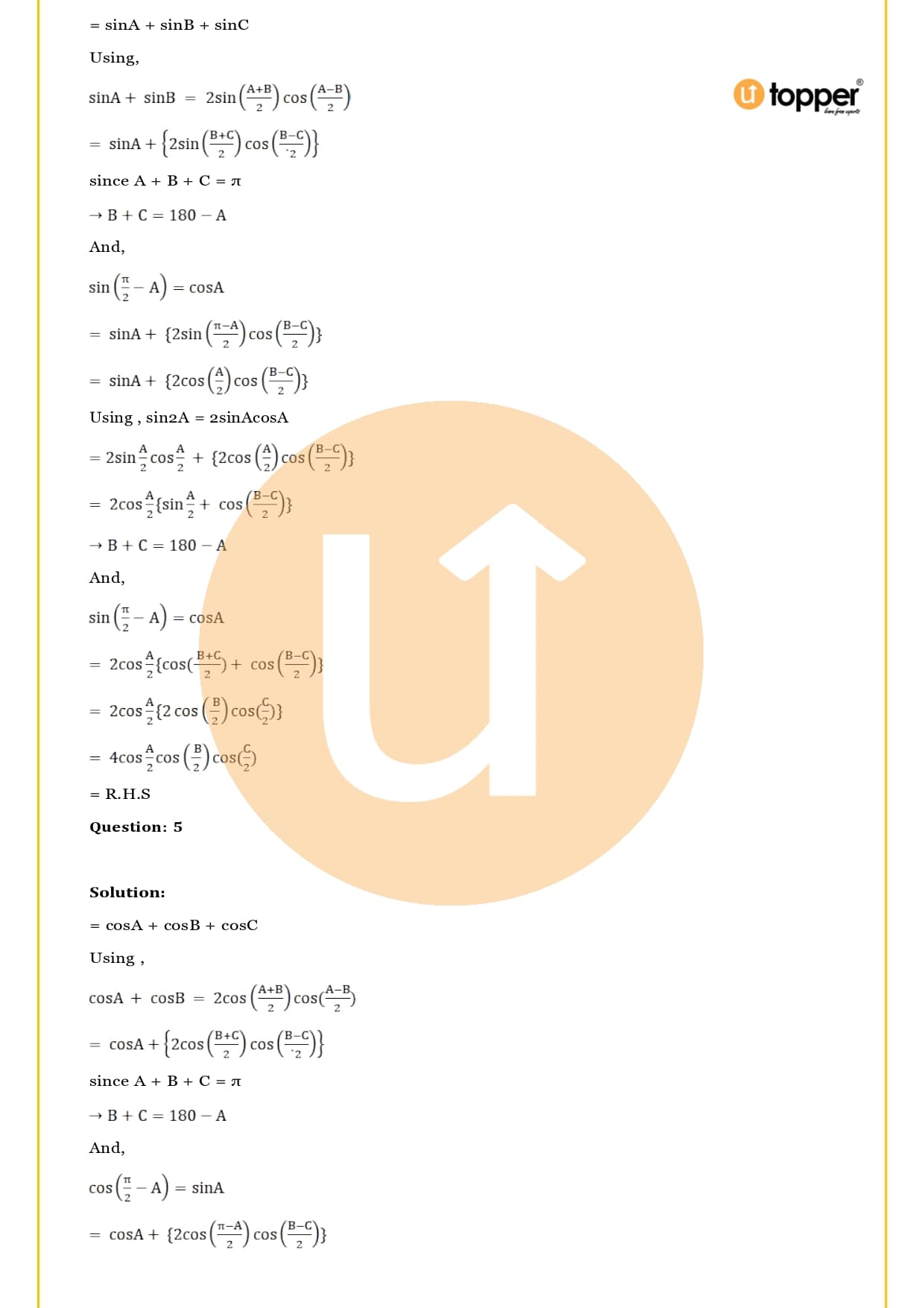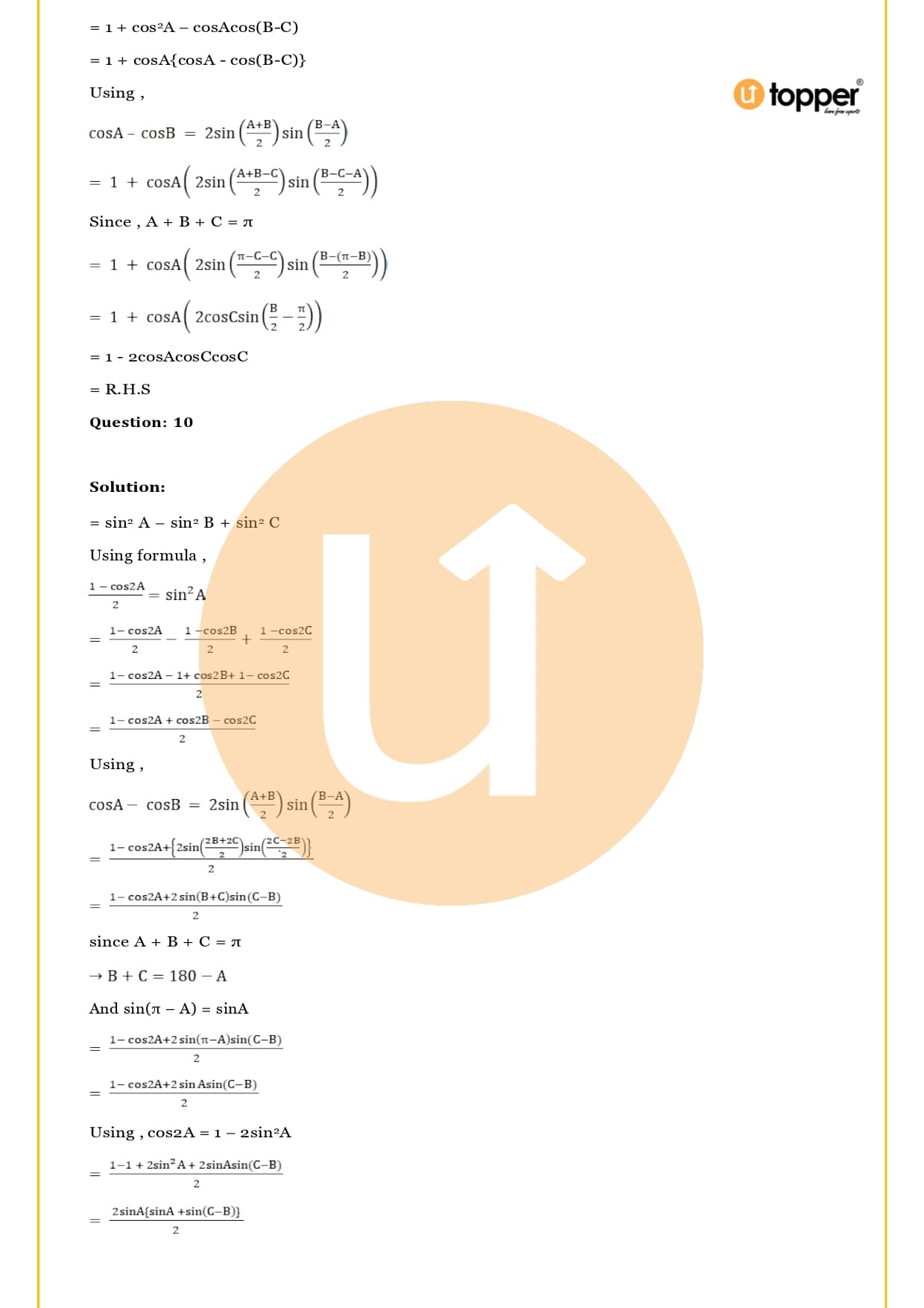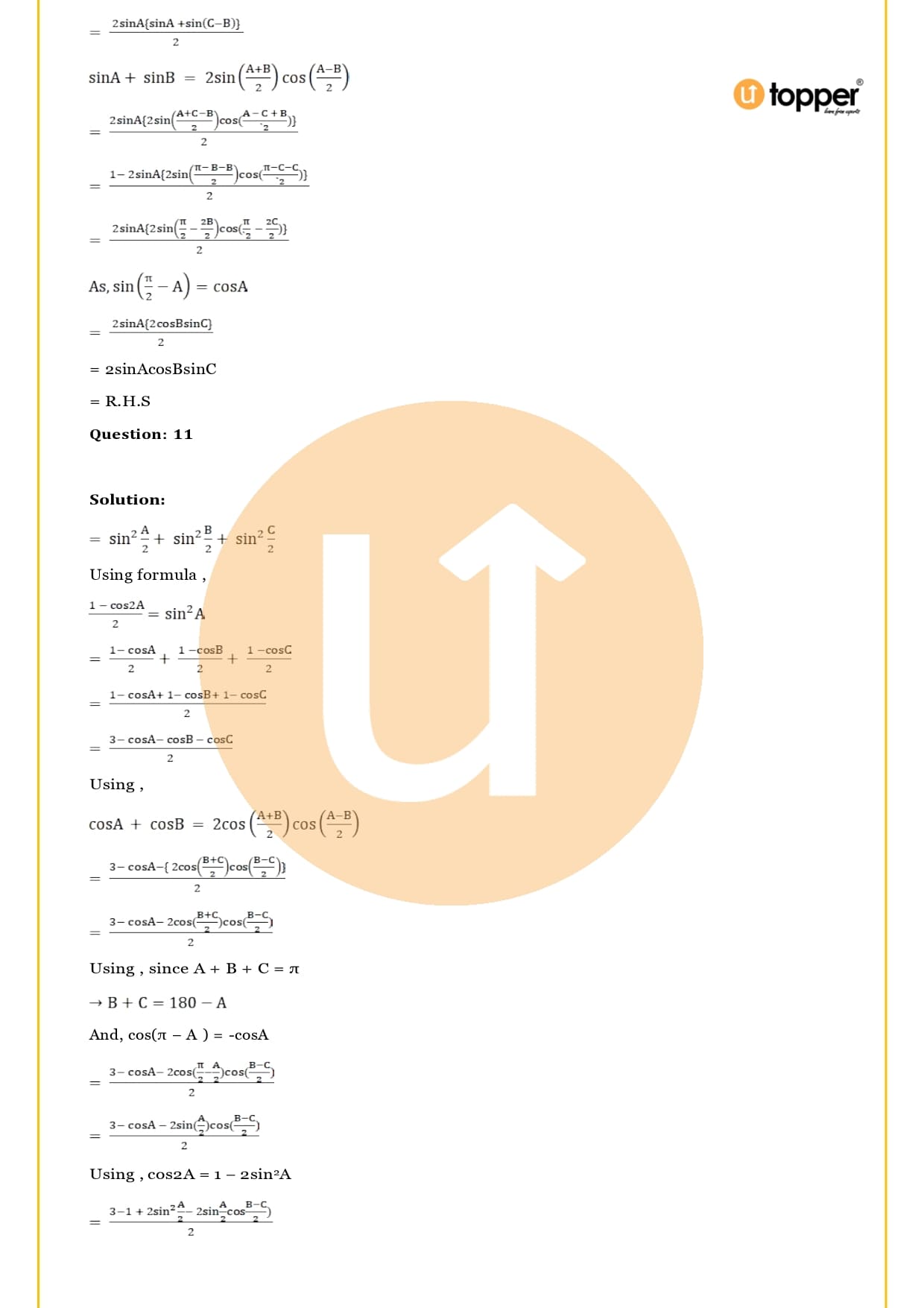RS Aggarwal Class 11 Solutions Chapter 16
RS Aggarwal Solutions for Class 11 Chapter 16 – Conditional Identities Involving the Angles of a Triangles PDF Download
RS Aggarwal Class 11 Solutions Chapter-wise – Free PDF Download
The RS Aggarwal Class 11 Solutions Chapter 16 are a basic way to study for this chapter so you can do well. This chapter starts with some Sin and Cos trigonometric formulas. It then shows you how to use trigonometric identities to find the angles of a triangle. One exercise with 12 questions is all that’s in this chapter.
Chapter 16 of the RS Aggarwal Class 11 Book isn’t too hard, but it does require the use of a few different trigonometric identities. So, it might be hard for you at first. But it’s easy to go over these formulas and identities when you have the best RS Aggarwal Class 11 solutions with you. We have given clear answers to all 12 questions so that you can answer any questions on the CBSE exams that are related to them.
Click here to Buy Online The RS aggarwal Class 11 Book Now
RS Aggarwal Class 11 Solutions Chapter 16 Download Free Pdf









RS Aggarwal Class 11 Solutions
Chapter 1: Sets
Chapter 2: Relations
Chapter 3: Functions
Chapter 4: Principle of Mathematical Induction
Chapter 5: Complex Numbers and Quadratic Equations
Chapter 6: Linear Equations in One Variable
Chapter 7: Linear Equations in Two Variable
Chapter 8: Permutations
Chapter 9: Combinations
Chapter 10: Binomial Theorem
Chapter 11: Arithmetic Progression
Chapter 12: Geometrical Progression
Chapter 13: Some Special Series
Chapter 14: Measurement of Angles
Chapter 15: Trigonometric or Circular Functions
Chapter 16: Conditional Identities Involving the Angles of a Triangles
Chapter 17: Trigonometric Equations
Chapter 18: Solution of Triangles
Chapter 19: Graphs of Trigonometric Functions
Chapter 20: Straight Lines
Chapter 21: Circles
Chapter 22: Parabola
Chapter 23: Ellipse
Chapter 24: Hyperbola
Chapter 25: Applications of Conic Sections
Chapter 26: Three Dimensional Geometry
Chapter 27: Limits
Chapter 28: Differentiation
Chapter 29: Mathematical Reasoning
Chapter 30: Statistics
Chapter 31: Probability

Let’s talk about Conditional Identities in more detail
Conditional Identity
Conditional Identity is a part of trigonometry, and it mostly deals with the special cases that trigonometry covers. The identities help you figure out how the angles of a triangle connect to each other. There are sines and cosines in this chapter, as well as the squares of sines and cosines. Tangents are also used in some sums.
This chapter is about the different ways to use trigonometry to figure out how the angles of a triangle relate to each other. Here, we’ve given a short summary of the whole chapter, which will help students do better on their tests. We also gave the students some important questions to help them understand how the test will be set up. Here are some important formulas to use in the chapter on conditional identities:
- Sin x + Sin y = 2 sin (x+y/2) cos (x-y/2)
- Sin x – Sin y = 2 cos (x+y/2) sin (x-y/2)
- Cos x + Cos y = 2 cos (x+y/2) cos (x-y/2)
- Cos x – Cos y = – 2 sin (x+y/2) sin (x-y/2)
This Chapter talks about the following kinds of questions:
- To show that the trigonometric equation is true when the angles of the triangles are already known.
- When the angles of triangles are given, use a formula to show that the trigonometric equation is true.
- To show that the identities in the trigonometric equations are true.
Exercise 16 of Chapter 16 of Class 11 has a total of 12 sums, and we have put the answers to all of them in order on our website. This answer will help students do better in school and get better grades. Most importantly, the solutions are made according to the most recent NCERT and CBSE guidelines.

FAQ ( Frequently Asked Questions )
1. What’s Conditional Identity?
Ans – Trigonometry has a part called “conditional identity” that deals with triangles that don’t fit the normal rules. The conditional Identity is used to show how the angles of a triangle fit together. They include adding up sines and cosines, adding up the squares of sines and cosines, and adding up tangents. To understand conditional trigonometric identities better, you need to know the basics about trigonometric ratios and the identities and formulas that go with them. In other words, a conditional identity is true if the variables meet a certain condition.
2. What are the formulas that Conditional Identities uses?
Ans – In RS Aggarwal Class 11 Solutions Chapter 16, “Conditional Identities Involving the Angles of a Triangle,” the questions are based on the idea that conditional identities can be used to solve trigonometric equations. In the chapter “Conditional Identities,” there are basically four formulas that are used. They are:
- Sin x + Sin y = 2 sin (x+y/2)cos (x-y/2)
- Sin x – Sin y = 2 cos (x+y/2)sin (x-y/2)
- Cos x + Cos y = 2cos (x+y/2) cos (x-y/2)
- Cos x – Cos y = -2 sin (x+y/2) sin (x-y/2)
3. What other study materials besides the RS Aggarwal Class 11 Solutions can you download from the Utopper site?
Ans – Utopper gives students a wide range of study materials like Revision notes, Important Questions and many more, from NCERT solutions to revision notes, as well as solutions for all of the chapters of Class 11 RS Aggarwal. All of these study tools are free, and you can download them from the Utopper website or app. Some of the study materials that students can find on the Utopper website are revision notes for all CBSE classes and all subjects, NCERT solutions from classes 1 to 12, sample papers and worksheets from previous years, and ICSE board solutions for all chapters and subjects, among other things. Students can also find many other resources.
